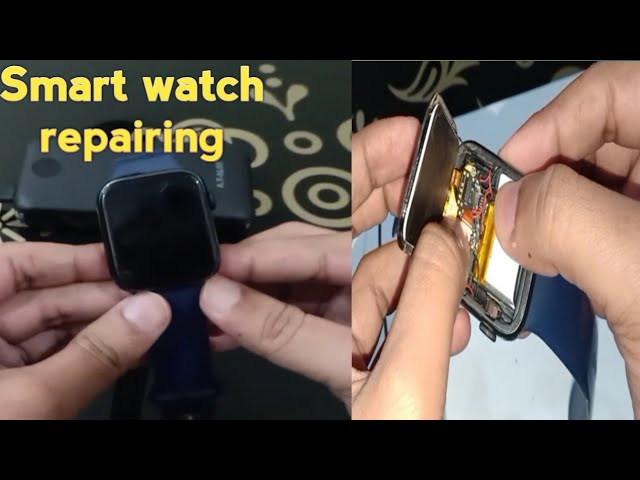Smart watches have become an integral part of our daily lives, offering not only the convenience of a wristwatch but also the smart functionalities of a phone. However, like any sophisticated gadget, they are prone to issues and damage. Whether it’s a cracked screen, battery issues, or software glitches, knowing how to repair your smart watch can save you time and money. This comprehensive guide will walk you through the essential steps for smart watch repair, ensuring your device is back to optimal performance in no time. smart watch repair
Common Issues with Smart Watches
Screen Damage
One of the most common issues with smart watches is screen damage. This can range from minor scratches to severe cracks that impair functionality. Protective cases and screen protectors can prevent such damage, but once it occurs, repair is often necessary.
Battery Problems
Battery issues can manifest as the watch not holding a charge, charging slowly, or draining quickly. Over time, batteries degrade, and a replacement may be required.
Software Glitches
Smart watches run on complex software that can occasionally malfunction. Issues such as unresponsive touch screens, connectivity problems, or apps crashing are common software-related problems.
Water Damage
Despite many smart watches being water-resistant, water damage can still occur. Exposure to water beyond the device’s rating can lead to malfunctions, especially in the internal circuitry.
Step-by-Step Smart Watch Repair
1. Assessing the Damage
Before you begin any repair, it is crucial to assess the damage. Inspect your smart watch thoroughly to identify all potential issues. For screen and battery problems, a visual inspection may suffice. For software and internal issues, a diagnostic tool or app provided by the manufacturer can be helpful.
2. Gathering Necessary Tools and Parts
Having the right tools is essential for smart watch repair. Precision screwdrivers, spudgers, tweezers, and plastic opening tools are commonly needed. Additionally, you may require specific parts such as replacement screens, batteries, or internal components. Ensure these parts are compatible with your smart watch model.
3. Screen Replacement
Replacing a damaged screen can be delicate work. Follow these steps for a successful repair:
- Power Off the Watch: Ensure your smart watch is completely turned off to avoid any electrical mishaps.
- Remove the Back Cover: Using a precision screwdriver, carefully remove the screws securing the back cover. Use a spudger to gently pry open the cover.
- Disconnect the Battery: To prevent any short circuits, disconnect the battery connector from the motherboard.
- Detach the Screen: Carefully disconnect the screen connector and remove the damaged screen. Use a plastic tool to avoid scratching or damaging internal parts.
- Install the New Screen: Attach the new screen by connecting it to the motherboard. Ensure the connection is secure and reassemble the watch by reversing the previous steps.
4. Battery Replacement
Replacing the battery involves a similar process:
- Turn Off the Watch: Ensure the device is powered down.
- Open the Back Cover: Remove the screws and open the back cover.
- Disconnect and Remove the Old Battery: Carefully disconnect the battery connector and remove the old battery.
- Install the New Battery: Place the new battery in position and connect it securely. Reassemble the watch.
5. Software Troubleshooting
For software issues, try these steps:
- Restart the Device: Often, a simple restart can resolve minor software glitches.
- Update Software: Ensure your smart watch software is up to date. Manufacturers regularly release updates that fix bugs and improve performance.
- Reset to Factory Settings: If problems persist, perform a factory reset. This will erase all data and settings, returning the watch to its original state.
- Reinstall Apps: Uninstall and reinstall problematic apps to resolve issues related to them.
6. Handling Water Damage
If your smart watch has been exposed to water, act quickly:
- Turn Off the Watch: Immediately power down the device to prevent short circuits.
- Dry the Exterior: Wipe down the watch with a soft, absorbent cloth.
- Use Desiccants: Place the watch in a bag of rice or silica gel packs for 24-48 hours to absorb moisture.
- Professional Cleaning: For severe water damage, consider professional cleaning and repair to address potential corrosion.
Preventive Maintenance Tips
To extend the life of your smart watch and minimize the need for repairs, consider these preventive maintenance tips:
- Use Protective Accessories: Screen protectors and cases can prevent damage from drops and scratches.
- Avoid Exposure to Extreme Conditions: Keep your smart watch away from extreme temperatures, humidity, and water beyond its resistance rating.
- Regular Cleaning: Clean your watch regularly with a soft cloth to remove dirt and grime that can affect functionality.
- Update Software: Regularly update your smart watch software to benefit from the latest features and fixes.
When to Seek Professional Help
While many repairs can be done at home, some issues require professional assistance. Complex smartwatch repairs involving the motherboard, intricate internal components, or severe water damage are best handled by professionals. If your smart watch is under warranty, always consult the manufacturer before attempting any repairs.
Conclusion
Repairing your smart watch can be a cost-effective way to extend its life and functionality. By following this comprehensive guide, you can address common issues such as screen damage, battery problems, software glitches, and water damage. Remember, preventive maintenance is key to avoiding frequent repairs, and when in doubt, seek professional help.





